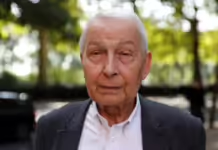It’s that time of year again.
The World Greatest Steeplechase with three days of spectacle and athletic ability grace the hallowed ground of Aintree once again.
It’s an event that captures the attention of the wider public like no other.
However, despite being such a national occasion, the sport is under increased scrutiny now more than ever.
Animal rights activists like Animal Rising and the League Against Cruel Sports have called for an end to the sport in its entirety.
Last year, the start of the Grand National was delayed when three Animal Rising activists took to the field in protest.
With less than a day before the festival starts, we look at this nuanced debate.
An End to Cruelty
For Animal Rights groups, their position is immovable.
They call for an end to Horse Racing in its entirety.
To their supporters, Horse Racing is a practice only for profit, whether that be owners, jockey’s or the general public.
The general public gambles an estimated £500 million over the course of the three days.
According to Animal Rising’s petition:
- On average a horse dies every other day on British Racetracks
- Which makes the odds of a Horse dying at the Grand National 2-1
- Sixty-eight horses have been killed at Aintree since 2007
Criticism has also been levied at whipping, a rule that the British Horse Racing Authority revised in 2022.
Ben Newman appeared on Sky News as part of the discussion around Horse Racing.
“The Horse Racing Industry does not have massive support” he said.
“It’s propped up by the gambling industry…that’s what’s keeping it afloat not popular opinion.”
For all the increased safety, organisers will never eliminate risk.
A New Era
But despite all this, the sport is an active part of British culture.
It’s the second-most popular spectator sport in the UK, with approximately six million people in attendance at British races alone.
It’s also grown in it’s inclusivity with 40% of attendees being women.
And the reality is, the risk isn’t what it used to be.
Such changes include:
- 34 Runners instead of the previous 40
- A standing start as opposed to the traditional rolling start
- Fence 11 has been reduced in height by two inches and will have the drop on its landing side reduced
- The start time is now 4:00pm
British Racing Authority have also published statistics to highlight the facts about the increased animal welfare.
Published on the website, HorsePWR, their 2023 statistics show the impact of the increased safety features.
| Number of Races | 10019 |
| Flat and Jump Percentage | 64% Flat 36% Jump |
| Number of Runners | 87619 |
| Number of Individual Horses | 18630 |
| Fatal Injuries | 158 |
| Fatal injury Rate | 0.18% |
| Five-Year Rolling Fatal Injury Rate | 0.20% |
As Kevin Blake, Horse Breeder and journalist, said in the same debate with Ben Newman:
“We would love that [Fatality Rate] to be zero, of course we would, but we can’t reduce risk entirely.”
I went on @SkyNews this morning to discuss the Grand National with Ben Newman (yep, the chap that ran onto the track during the Derby last year). Very annoyed that I forgot to mention https://t.co/6XyXvPFznI.
Thank you for having me on and being a fair referee, @KayBurley. pic.twitter.com/MinrACgrTv
— Kevin Blake (@kevinblake2011) April 8, 2024
The future of Horse Racing will be debated over the next three days and will continue to be scrutinised in years to come.
Animal Rising have no plans to interrupt this year’s running.
Ultimately, if people want to watch or attend these events the events will continue.
Sports are constantly evolving to mitigate risk; it is up for organisers to balance the spectacle and athletic competition with the inherent risk to the performers
(Photo Licensed in Agreement with Alamy Images)











